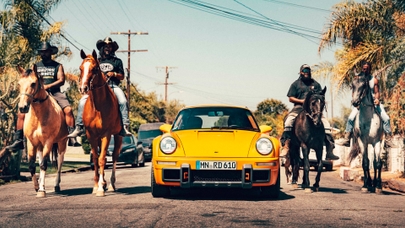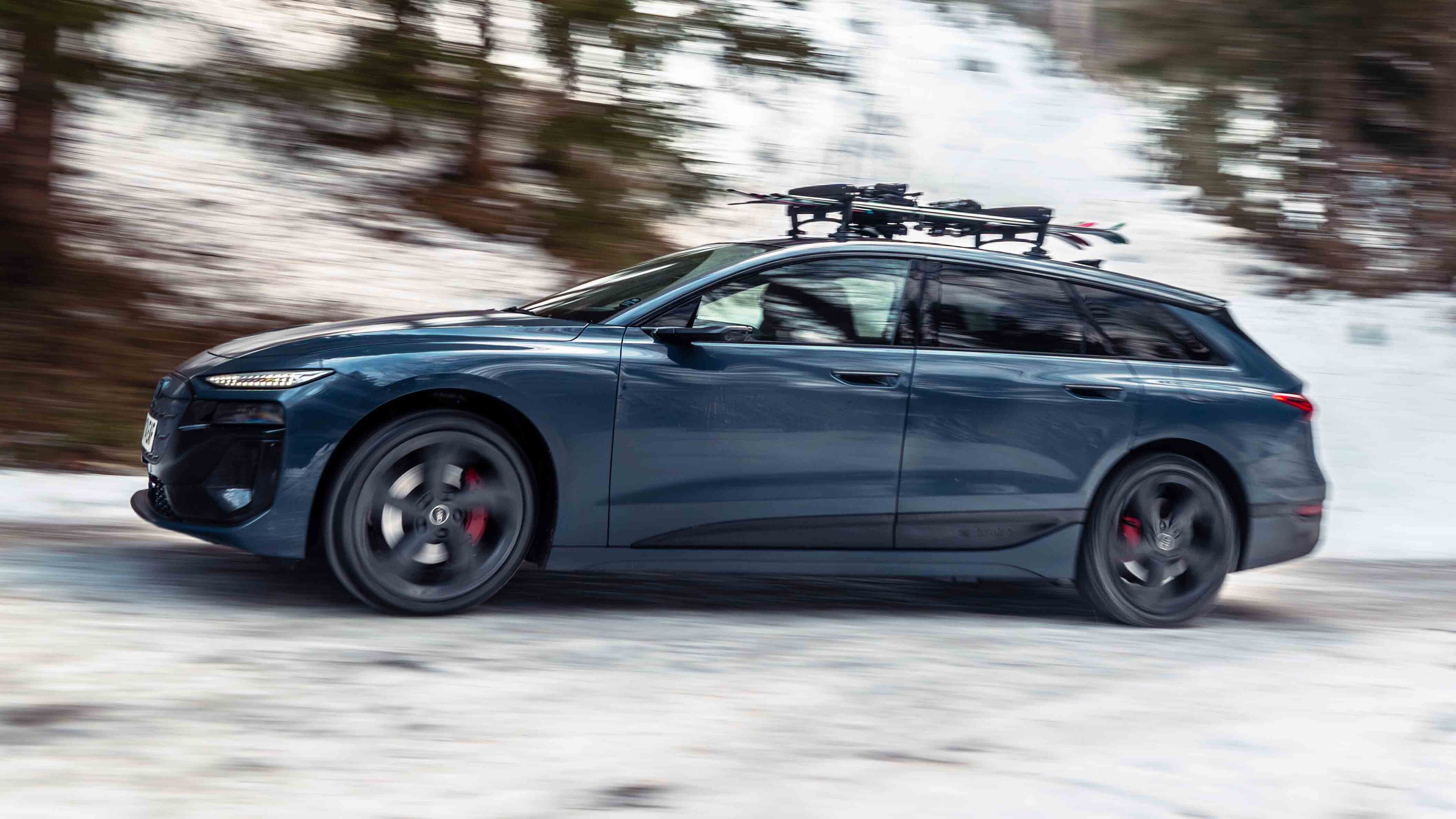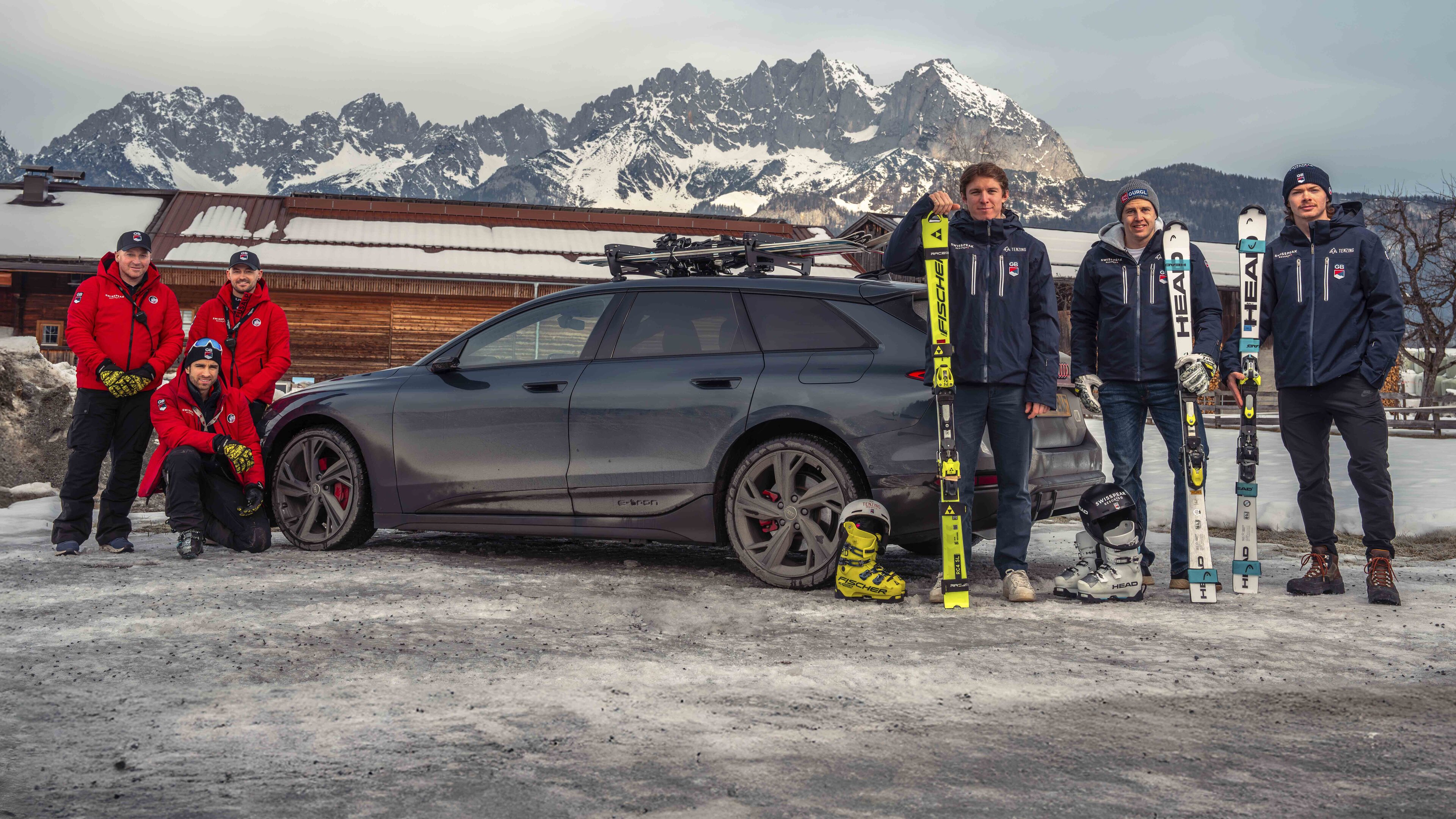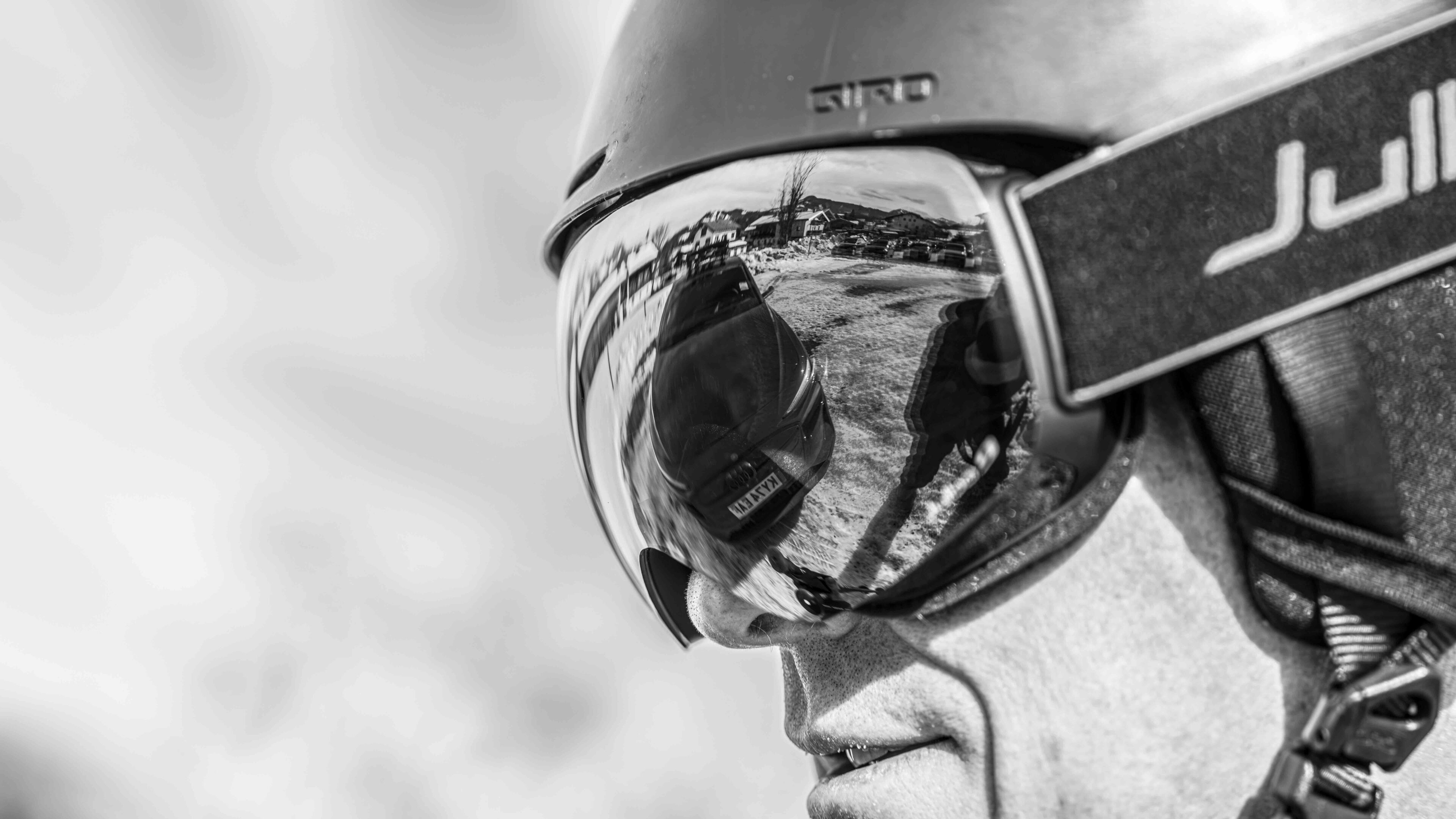
Slippery slope: across Austria in the Audi A6 e-tron
The British ski team needed a ride to Kitzbühel... we had just the car for the job
Kitzbühel is pumping. Heaving. It hums and vibrates, shimmers with life and energy in a way that’s entirely explained by the 100,000 people who have crammed themselves into this small medieval Tyrolean town (usual population 8,300). Frosted breath steams into the chilled air as the crowds cheer and chant, cowbells swing frantically, Europop blares, beer sloshes, flares and flags wave erratically and bratwurst is consumed.
This is the Hahnenkammrennen, the most famous weekend on the Alpine calendar, the jewel in Austria’s ski racing crown, and all the excuse necessary for an almighty party. The stumbling and unsteadiness has nothing to do with the snow and ice underfoot. For many here the ski racing is entirely incidental.
But not for me. It’s rapidly approaching 6pm on Saturday evening, I’ve got British slalom skiers Laurie Taylor and Billy Major in the car and we’re stuck in traffic. This is bad. They need to be at the bib draw that sorts the start order for tomorrow’s race, I’ve got the right pass which eases us past the police, but cuts no ice with the crowds. We proceed at stumbling pace. If I had an engine, I’d rev it.
The Audi A6 Avant e-tron is our sort of electric car. By which I mean it’s not an SUV. How refreshing. It’s the most aerodynamic Audi there’s ever been, slipperier through the air than a ski gliding over snow. And zero emissions means we’re not causing the snow to melt – a literal hot topic in these parts. So how to put it to the test?
Photography: Rowan Horncastle
Simple: give it the most challenging scenario a practically minded electric car will ever face. Fill it with kit (bad for range). Stick stuff on the roof (bad for range). Drive it across Germany at autobahn pace (bad for range). Go somewhere very cold (bad for range).
I was happy with all of that, apart from the sticking stuff on the roof. I imagined the looks on the faces of Audi’s aerodynamicists, ruining untold hours of wind tunnel work, and shoved it all inside for the journey over. Research suggests that I boosted range (and lowered cost) by around 10–15 per cent as a result. And you know what? For a long high-speed trip the Audi is the most efficient electric car that I’ve driven. In similar conditions electric SUVs I’ve tested have struggled to do much over 2.0 miles per kWh, but over the course of 1,789 chilly trans European miles the A6 did 2.7mpkWh.
Let’s step away from the real world and into the lab to compare it with Audi’s own Q6 e-tron, which is technically identical to this and only weighs 15kg more than the 2,185kg estate. But instead of a 0.24 drag factor, it’s 0.30Cd, and that’s for a shape that already has a 10 per cent bigger frontal area. Its official range is 361 miles, against 402 for the Avant. Which of course it doesn’t do if you’re going at 100mph through Germany and it’s sub-zero outside. I’m happy with 240 miles. Charging is wickedly fast thanks to 800V architecture, the camera mirrors stay clean, and because it was developed round these parts it’s silent through the air and rides far better here than it did in the UK, where it felt a little lumpen and buzzed on concrete surfaces like someone was gently blowing a kazoo in your ear.
But I get on well with it. Yes, the colour palette is dismally sludgy and the deep sides that conceal the battery make it look heavier of flank than a lithe estate should, but life on board is good. The cabin design provides space and shape while also finding room for five screens across the dash, the augmented reality head up display works well, it’s not too complex or distracting to operate, there’s a fun panoramic roof with switchable transparency and it’s every bit as big inside as an SUV.
Top Gear
Newsletter
Thank you for subscribing to our newsletter. Look out for your regular round-up of news, reviews and offers in your inbox.
Get all the latest news, reviews and exclusives, direct to your inbox.
And handles better. Sitting lower you’re less exposed to suspension turbulence, body control and lean are more restrained, it’s not having to work hard to keep control of itself, so it glides about easily, shrinking distance, being effortless. Just one thing. It’s not quattro. Gasp, etc. This is a RWD Audi estate. Not for BMW chasing reasons, but for single motor efficiency. You can have quattro for low temp peace of mind, but winter tyres do the job better and don’t cost £5,100 extra.
Define irony: a pastime steeped in wealth and exclusivity, whose pinnacle crams six people and gear into borrowed vans and sends them round the Alps like rock band roadies. That’s ski racing. There’s no glamour and little money. Team GB’s Alpine ski squad consists of three racers (including Dave Ryding, the UK’s most successful ski racer ever) and three coaches – who also double up as physios, course inspectors, drivers, managers and ski technicians. All ex-racers. Passion has a lot to do with why everyone is involved.
A few miles up the valley a low flying Red Bull aerobatics plane signals the start of the men’s downhill, but I’m in a hotel basement with Tom ‘TJ’ Baldwin and head coach Alain Baxter, prepping skis for tomorrow’s slalom. It’s fascinating. At its most basic a ski is a leaf spring, designed to flex under pressure on the way into corners, and then release its energy at the exit. It’s wider at tip and tail so it curves into a radius when canted over on its edge. Like a GT3 racer, although cosmetically similar to models you or I could buy, the construction is entirely different. I pick up a pair of Laurie Taylor’s race skis. They’re dense and heavy. The EVs of the ski world. Necessary for stability and torsional strength, apparently.
Intelligently designed, slippery and efficient, the hope for us is that it could kickstart an estate car revival
Preparation is everything – it’s akin to setting up a racing car. Although a ski only spends around three per cent of a run on its base during a slalom, using the right wax to minimise friction is key. But it’s the metal edges that the attention really goes into. Sharpness and tuning is everything when the courses are injected with water to form sheet ice: “We sharpen them at 88°,” comments TJ as sparks fly from his £3k edge grinder, “then finish them with a hand file. I use a sensitive bit of my hand to check the sharpness.” Scars line the outside edge of his little finger. “The boys are so sensitive, a microscopic nick in the edge and they’ll tell because it’ll change the grip. Confidence is vital – they need to trust the edge from the moment they push out of the starting gate.”
I end up having to turf Billy and Laurie out of the A6 to get them to the bib draw on time – that in itself draws a crowd. The next day conditions aren’t exactly... snowy. It pounds with rain. I hear people mutter and jest about global warming as the slalomists flick flack down, but not even a downpour can derail the party atmosphere. Ryding and Taylor finish joint 16th. For a team with so little resource, that’s a reasonable result, but three years ago Ryding won outright here, the first Brit ever to win a Ski World Cup race.
The A6 e-tron glides silently around Kitzbühel, carrying skis and skiers, the ideal zero emission partner for a sport whose very existence is dependent on a natural product that appears to be in increasingly short supply. Intelligently designed, slippery and efficient, the hope for us is that it could kickstart an estate car revival. Long shot? Yeah, but so was a Brit winning a ski race.
Trending this week
- Car Review
Ferrari Amalfi
- Long Term Review
Is the Suzuki Swift still the best small car money can buy?











